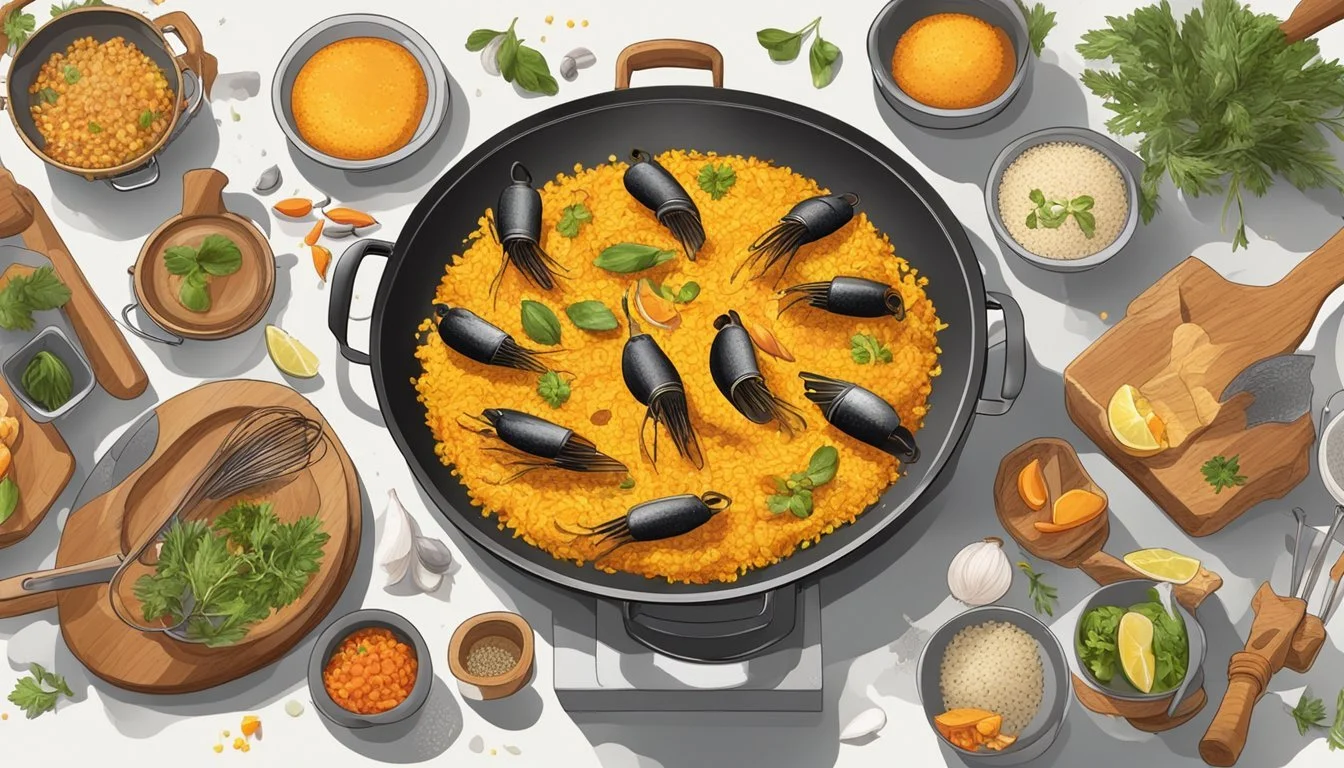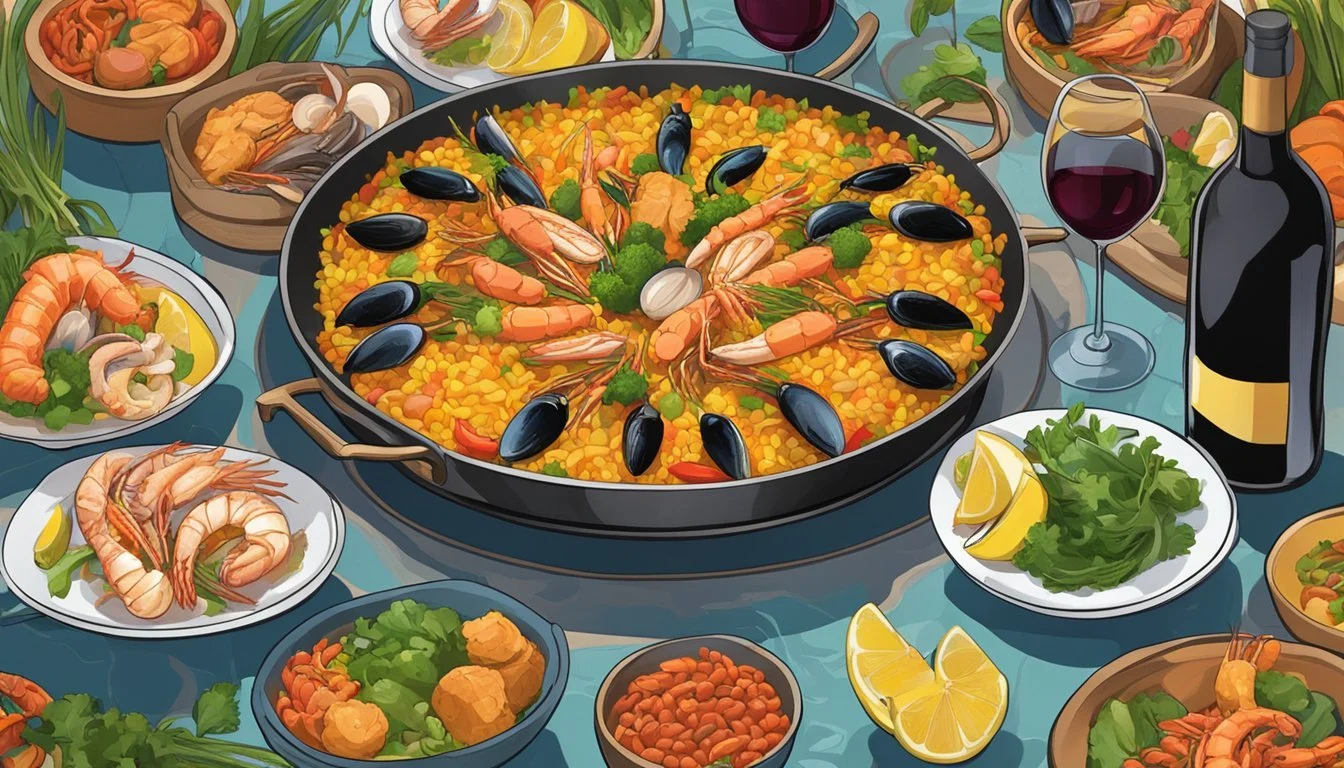How Do You Eat a Paella?
Unveiling the Traditional Spanish Method
Paella is a quintessential Spanish dish with deep roots in the region of Valencia, regarded widely as one of Spain's most emblematic culinary treasures. As a traditional rice-based creation, it embodies the rich flavors and agricultural heritage of its origin. This dish is not just food; it's a cultural experience, often associated with social gatherings and family meals, particularly as a hearty lunch on Sundays.
Eating paella involves a certain etiquette to appreciate its communal nature. Unlike other dishes, it is often served straight from the large, shallow pan it's cooked in, known as a 'paellera.' Diners typically enjoy the meal directly from the pan, starting at the perimeter and working inwards while being mindful of their neighbors' portions. The communal aspect fosters a shared dining experience, encouraging interaction and bonding over the meal.
Moreover, the proper enjoyment of paella extends beyond mere etiquette; it is also about savoring the diverse ingredients and textures, from the soft, aromatic rice absorbing rich flavors to the perfectly cooked proteins like seafood (What wine goes well with seafood?) or rabbit that are traditional to the dish. The socarrat, the caramelized layer of rice at the bottom of the pan, is especially prized for its crisp texture and concentrated flavor.
The Origins of Paella
Paella has its beginnings in Valencia, Spain, marking it as a traditional dish steeped in cultural significance. Valencians have long embraced this meal, which has evolved into a quintessential Spanish dish recognized around the globe.
Valencian Roots
Valencia, the birthplace of paella, is located on Spain's eastern coast. The dish's inception can be traced back to the 14th century, where it emerged out of a practical need to cook rice with available local ingredients. The term "paella" itself comes from the Old French word "paelle" for pan, which is a derivative of the Latin word "patella". In Valencian, 'paella' refers to the cookware used for preparing the dish—a wide, shallow pan.
Evolution of Paella
Over time, the original Valencian recipe has welcomed a variety of adaptations. Since its rise in popularity in the 19th century, paella has experienced an evolution:
Original paella was likely a simple mix of rice, vegetables, snails, and rabbit.
Later, an introduction of chicken, duck, (What wine goes well with duck?) and even seafood expanded the dish's repertoire.
Addressing accessibility and personal tastes, regional variations of paella have developed across Spain.
This evolution reflects both the adaptability of the recipe and the diverse culinary landscape of Spain.
Ingredients and Variations
The essence of paella lies in its versatility and the harmony of its ingredients, which vary by region and preference, yet always circle back to its rice core, colored with saffron's golden hue.
Core Ingredients
In every paella, rice plays the starring role, preferably the short-grained bomba rice, known for its ability to absorb flavors. Saffron and paprika provide the distinctive coloring and taste, while garlic, onion, and tomatoes form the foundational sofrito. It's all cooked in a base of chicken broth or seafood stock, enhanced with olive oil.
Regional Variations
Each region in Spain brings its unique twist to the dish. Valencia, the birthplace of paella, traditionally includes rabbit, chicken, snails, and green beans. In Catalonia, rabbit and duck are common, whereas chorizo might find its way into the mix elsewhere, despite being a contentious addition.
Seafood Additions
Seafood paella, or "paella marinera", is lavish with oceanic flavors. It often includes:
Mussels, (What wine goes well with mussels?) prawns, and calamari for a taste of the sea
Clams (What wine goes well with clams?) and jumbo shrimp for a luxurious touch
Squid rings to enrich the texture
Meats and Vegetables
Non-seafood variants are hearty with proteins such as pork or chicken, and sometimes even duck. Vegetables add freshness, with artichokes (What wine goes well with artichokes?), red bell peppers, and asparagus being widely used. Extra virgin olive oil ensures richness, and parsley garnishes with a fresh finish.
Preparation and Techniques
Paella preparation is an art that hinges on specific techniques and components, ensuring that every bite resonates with authentic Spanish flavor.
The Importance of Sofrito
Sofrito serves as the foundational element in crafting an authentic paella. A well-prepared sofrito—consisting of finely chopped onions, tomatoes, and sometimes peppers—cooked in olive oil, imbues the dish with depth and richness. It's crucial to sauté these ingredients until they meld into a concentrated, fragrant paste, setting the stage for the rest of the flavors.
Mastering the Socarrat
Achieving the coveted socarrat, the crispy caramelized layer of rice at the bottom of the pan, is a testament to one's paella prowess. One should resist the urge to stir the paella once the rice begins to cook, allowing the bottom layer to toast to golden perfection. This socorrat is the hallmark of a well-prepared dish, offering texture and a slightly smoky flavor.
Cooking in a Paella Pan
The choice of pan is paramount: a traditional paella pan, wide and shallow, allows rice to cook evenly and achieve the socarrat. One should heat the pan over a consistent, medium-high flame and distribute ingredients in a thin layer, as to not overcrowd the pan. Whether crafting a seafood paella or including other proteins, the pan's design aids in the evaporation of broth, ensuring that the Spanish rice, such as bomba, absorbs the flavors and cooks to the ideal texture.
Serving and Presentation
When serving paella, presentation plays a vital role in enhancing the culinary experience, adhering to traditional methods and etiquette.
Traditional Presentation
Paella is traditionally served in the pan it is cooked in, showcasing the sociable aspect of sharing the meal. This method not only retains the heat but also exhibits the inviting array of ingredients that may include a variety of seafood in a seafood paella or a combination of meats and vegetables in a mixed paella. The presentation is often garnished with wedges of lemon, adding a vibrant visual contrast and a zesty flavor that can be squeezed over the dish before eating. To augment the visual appeal for modern diners, many choose to present the dish on platforms like Instagram and Pinterest, capturing the colorful and rustic essence of the dish.
Eating Etiquette
When eating paella, it is typical to use a spoon, the traditional utensil for enjoying this dish. Diners eat directly from the pan, starting from the perimeter and moving inwards, while being mindful not to invade the portion of others – a practice that respects personal boundaries and sharing. A 'trench' or small boundary may be made to separate portions elegantly. Each mouthful should ideally contain a little of the flavorful crust (socarrat) that forms at the bottom of the pan, which is considered a delicacy. The lemon wedge is often squeezed over one's portion to add a fresh burst of flavor.
Pairing and Accompaniments
With paella, the selection of proper drink pairings and side dishes is crucial to complementing the rich and diverse flavors of this classic Valencian dish. Whether one opts for a refreshing beverage or a simple side, each choice should balance and enhance the tastes present within the paella.
Beverage Pairings
White Wine: A crisp and aromatic white wine, such as a Valencian white, harmonizes with paella's complexity. The citrus undertones in the wine can echo the zest of Valencian oranges often used in preparing the dish.
Sangria: For a more traditional touch, Sangria, with its bold fruit flavors, offers a sweet and tangy contrast that can cleanse the palate between bites of paella.
Side Dishes
To accompany the savory notes of paella, which often include sweet smoked Spanish paprika, black pepper, bay leaf, and thyme, side dishes that offer a contrast in texture or a refreshing crispness are an excellent choice.
Simple Salads: A green salad dressed lightly with lemon juice and olive oil provides a refreshing counterpoint.
Garlic Green Beans: The crunch and zest of garlic green beans add a bright and savory note.
Bread: A slice of rustic bread is perfect for absorbing the flavorsome socarrat at the bottom of the paella pan.
Popular Paella Recipes
Paella, a vibrant Spanish dish, offers an array of flavors depending on the recipe. Key elements include a specific rice type, saffron for its distinct color and taste, as well as various meats or seafood. Below are three popular types of paella, each delivering a taste of Spain's rich culinary culture.
Seafood Paella Recipe
A Seafood Paella brings the ocean’s bounty to your plate. It typically includes shrimp, squid, and mussels, each cooked in a fragrant broth and combined with saffron-infused rice. Tomatoes and sweet paprika complement the fresh flavors of the seafood. Precise seasoning is crucial, ensuring the dish retains its authentic taste.
Meat Lovers' Paella
For those who favor the rich tastes of land-based proteins, Meat Lovers' Paella is an ideal choice. It's characterized by robust meats such as chicken, rabbit, or even chorizo, each imparting a depth of flavor to the rice and vegetables. The key to its heartiness lies in the stock used, often simmered with the bones of the meats for an unmistakable savory note.
Mixed Paella
Mixed Paella is the ultimate combination of meat and seafood, where chicken pieces might be combined with shrimp and mussels. It's a colorful merger of the land and sea, with each protein cooked to perfection before mingling with the seasoned rice. This version embodies the diversity of paella, ensuring a flavorful experience with every bite.







